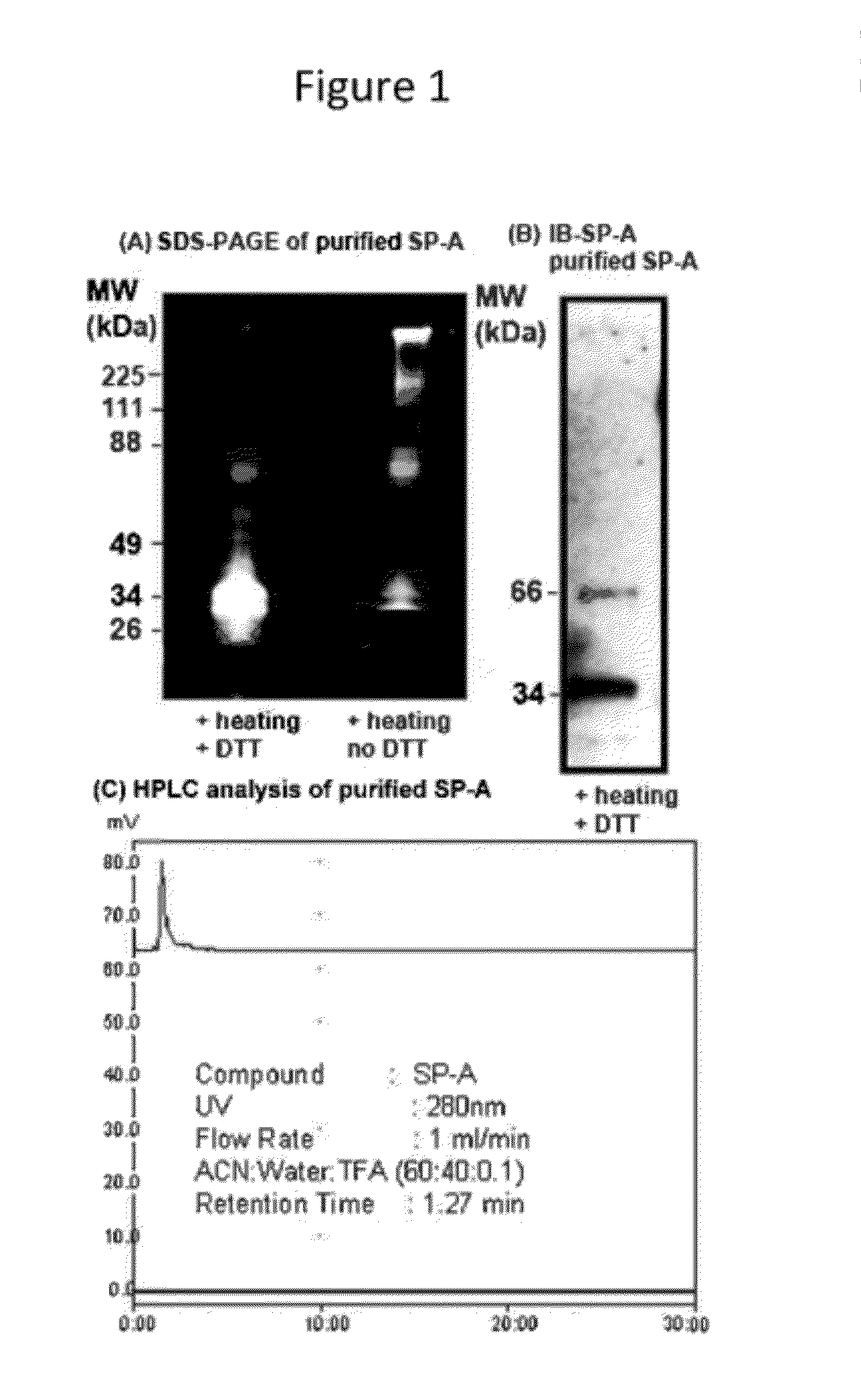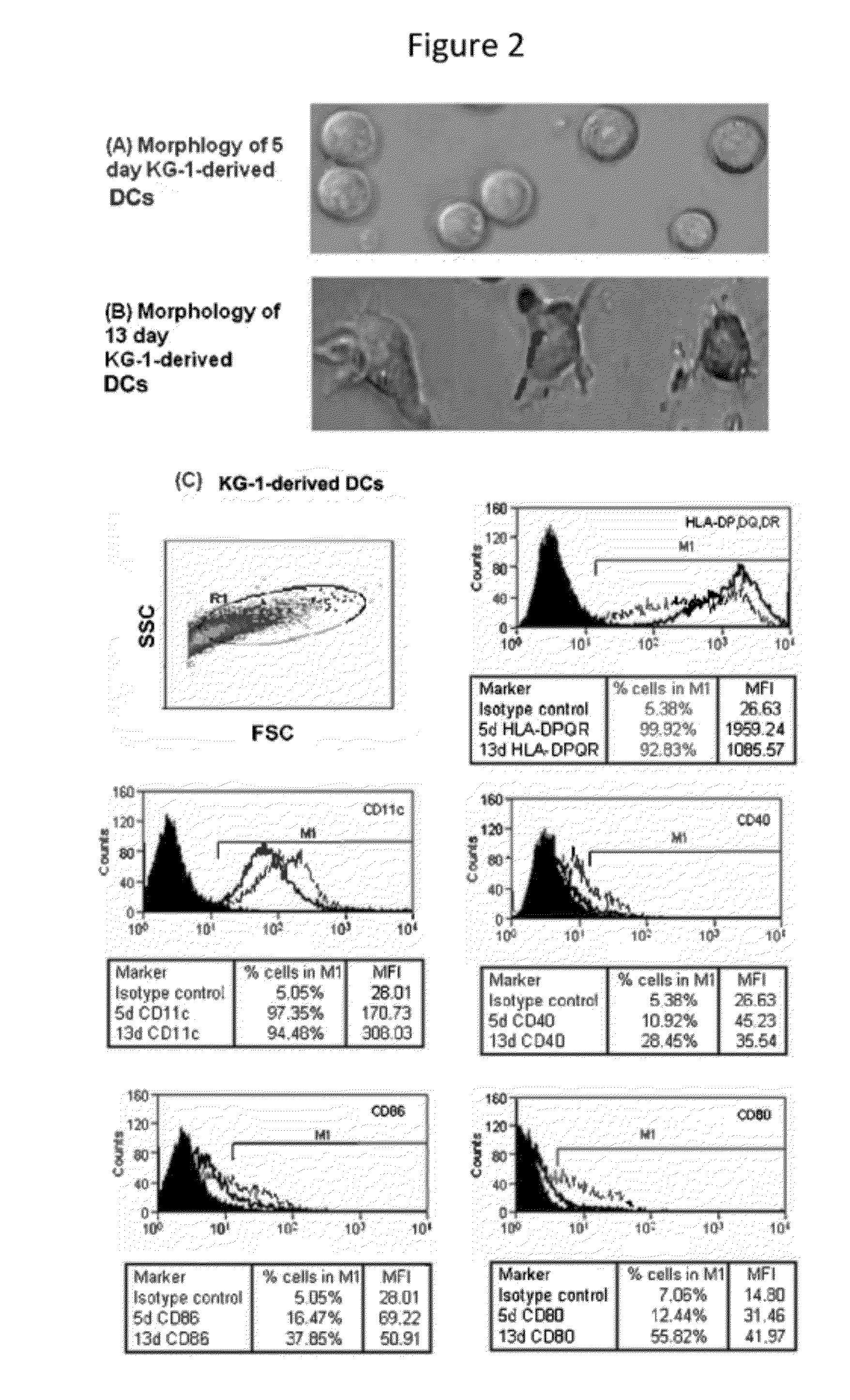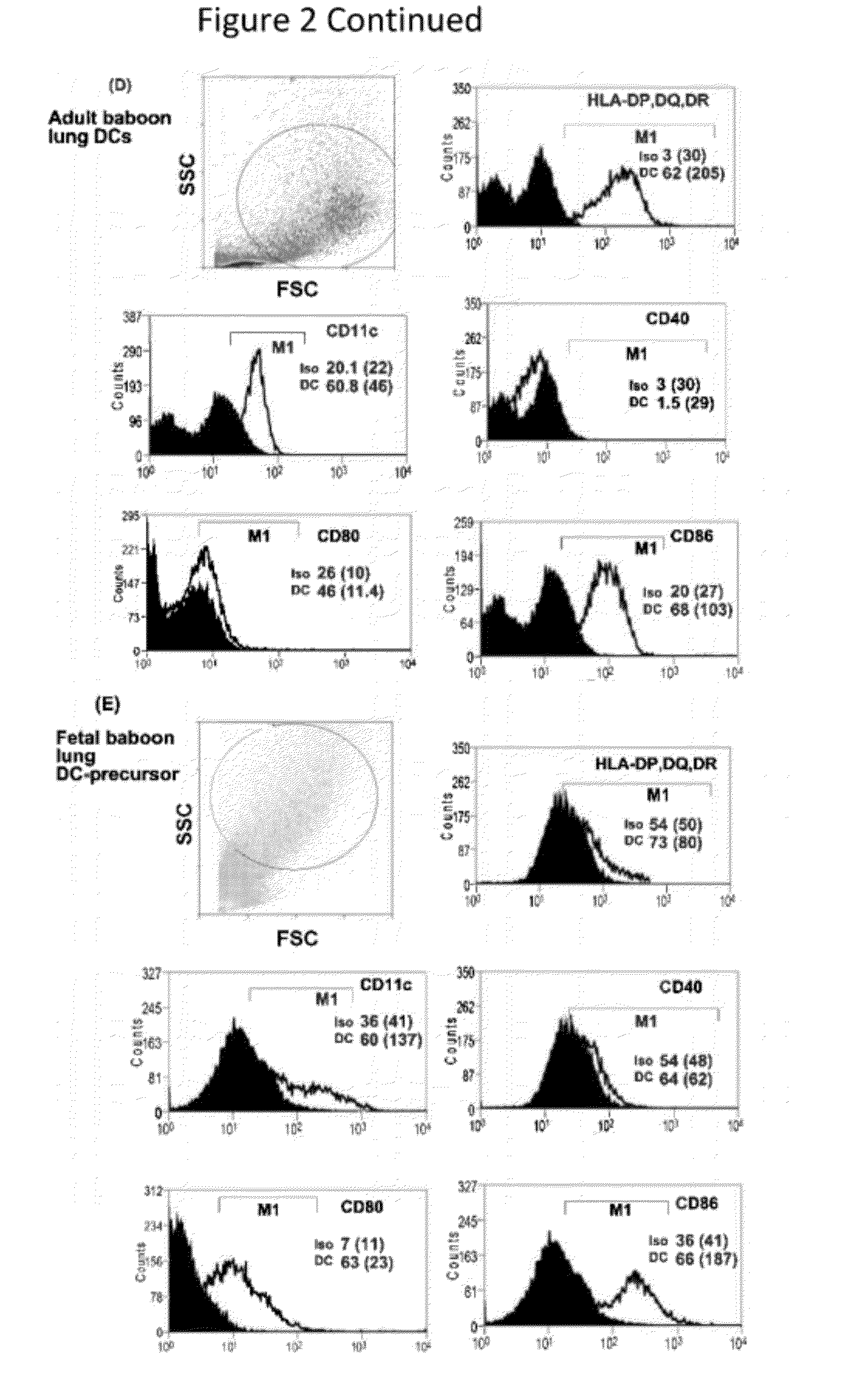Peptide compositions that downregulate tlr-4 signaling pathway and methods of producing and using same
- Summary
- Abstract
- Description
- Claims
- Application Information
AI Technical Summary
Problems solved by technology
Method used
Image
Examples
example 1
Surfactant Protein-A and Toll-Like Receptor 4 Modulate Immune Functions of Lung Dendritic Precursor Cells Harvested from Preterm Baboons
[0083]Preterm infants are highly susceptible to infections; this increased susceptibility to infections is associated with perturbed development and extreme immaturity of the immune system. Antigen-presenting cells have an important role in pathogen-uptake and processing as well as in regulating inflammatory and adaptive host immune responses. Among various types of antigen-presenting cells, dendritic cells (DCs) have been recognized as the most potent (Fajardo-Moser et al., 2008; T. Ohteki, 2007; Sabatte et al., 2007; van Vliet et al., 2007). In the past, several studies have confirmed an immunomodulatory role of lung DCs against a variety of antigens in adult humans and animal models (Banks et al. 1999; Fach et al., 2007; Holt et al., 1995; Lammatzsch et al., 2007; Masten et al., 2006; Webb et al., 2005) with a mature immune system; however, until...
example 2
A Novel TLR4-Interacting Surfactant Protein-A-Derived Peptide Suppresses LPS-Induced TLR4 Expression and TNF-α Release
[0121]Published reports suggest that the bronchioalveolar lavage pools (extracellular pools) of SP-A are significantly reduced in lungs of infected patients and animal models (Alcorn et al., 2005; Awasthi et al., 1999; Awasthi et al., 2001; Awasthi et al., 2004; Chang et al., 2006; Kajikawa et al., 2005). In contrast, the TLR4 expression is increased (Awasthi et al., 2008; Chang et al., 2006; Gagro et al., 2004; Kajikawa et al., 2005). The reduction in the amounts of SP-A, and simultaneous increase in TLR4 expression corroborates well with the clinical condition of patients having fulminant infection and inflammation, respectively. In these clinical scenarios, the introduction of SP-A should facilitate clearance of pathogens and attenuate inflammation. However, currently-available clinical surfactants do not contain SP-A or SP-D. Thus, a great need has been felt for ...
example 3
Use of SPA4 to Modulate TLR4 Signaling for Treatment of Intestinal Inflammation
[0162]About a million people are currently suffering from inflammatory bowel diseases (IBD) in the US alone, and new cases are being diagnosed at the rate of 10 cases per 100,000 people (American College of Gastroenterology). IBD causes chronic inflammation in the intestine with alternating periods of active and latent disease, and accounts for a huge economic cost associated with multiple clinic visits and hospitalizations. Chronic inflammation can lead to debilitating complications including colon cancer. Lifelong pharmacotherapy remains the mainstay of IBD management, whereas surgery is indicated for the treatment of refractory disease or specific complications.
[0163]Conventional IBD therapies include the use of aminosalicylates, corticosteroids and immunosuppressive drugs (e.g., methotrexate, cyclosporin A). These traditional treatment modalities provide symptomatic relief to some extent depending on ...
PUM
| Property | Measurement | Unit |
|---|---|---|
| Fraction | aaaaa | aaaaa |
| Length | aaaaa | aaaaa |
Abstract
Description
Claims
Application Information
 Login to View More
Login to View More - R&D Engineer
- R&D Manager
- IP Professional
- Industry Leading Data Capabilities
- Powerful AI technology
- Patent DNA Extraction
Browse by: Latest US Patents, China's latest patents, Technical Efficacy Thesaurus, Application Domain, Technology Topic, Popular Technical Reports.
© 2024 PatSnap. All rights reserved.Legal|Privacy policy|Modern Slavery Act Transparency Statement|Sitemap|About US| Contact US: help@patsnap.com










